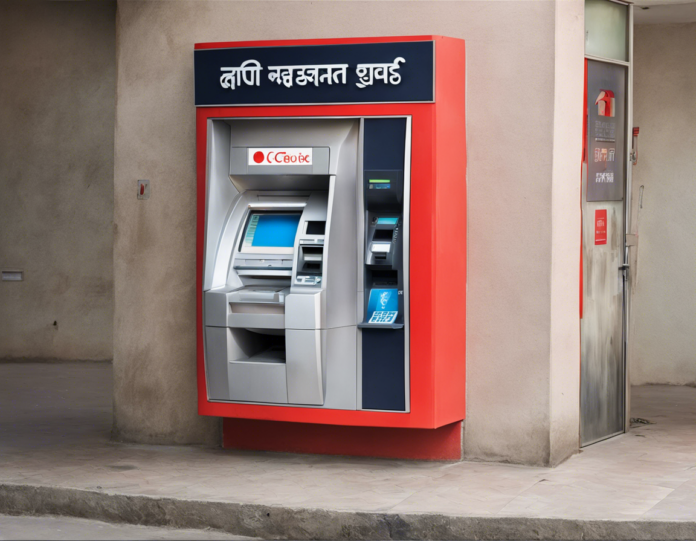Introduction
Access to cash is a critical requirement in our daily lives, and automated teller machines (ATMs) provide a convenient way to withdraw cash at any time of the day. However, many individuals still find themselves unsure of the exact process of withdrawing money from an ATM. In this comprehensive guide, we will walk you through the step-by-step process of how to withdraw money from an ATM, explore some essential tips for a smooth transaction, and address common questions associated with ATM cash withdrawals.
Understanding the ATM
Before diving into the steps of withdrawing cash from an ATM, it’s essential to understand the basic components of an ATM. An ATM typically consists of a screen where you interact with the machine, a keypad for entering your Personal Identification Number (PIN), a card reader where you insert your debit or credit card, and a cash dispenser where the money is released.
Step-by-Step Guide to Withdrawing Cash from an ATM
-
Locate an ATM: Find a nearby ATM of your bank or a compatible network. You can use your bank’s mobile app or website to locate the nearest ATM.
-
Insert Your Card: Insert your debit or credit card into the card reader with the chip facing up and the side with your bank’s logo facing left.
-
Enter Your PIN: Use the keypad to enter your Personal Identification Number (PIN) securely. Make sure to shield the keypad while entering your PIN to maintain confidentiality.
-
Select Language: Choose your preferred language for the transaction.
-
Select “Withdrawal”: On the screen, select the option for “Withdrawal” or “Cash Withdrawal”.
-
Enter Amount: Enter the amount of cash you wish to withdraw. Take note of any withdrawal limits imposed by your bank.
-
Select Account: If you have multiple accounts linked to your card, select the account from which you want to withdraw money.
-
Confirm Transaction: Review the details of your transaction, including the amount and account, and confirm the withdrawal.
-
Take Your Cash: Once the transaction is approved, the ATM will dispense the requested amount of cash. Remember to take your cash, card, and the transaction slip if offered.
-
End Transaction: Press the option to complete the transaction, remove your card, and take any printed receipt if available.
Tips for a Smooth ATM Transaction
- Always keep your PIN confidential and never share it with anyone.
- Regularly change your PIN to enhance security.
- Be cautious of your surroundings while using an ATM to prevent unauthorized access to your transaction.
- Check for any suspicious devices attached to the ATM before inserting your card.
- Keep your card safe and report any loss or theft immediately to your bank.
FAQs (Frequently Asked Questions)
- Is there a fee for using an ATM from a different bank?
-
Yes, using an ATM from a different bank may incur additional fees, such as out-of-network ATM charges.
-
What should I do if the ATM does not dispense cash but deducts the amount from my account?
-
Contact your bank immediately and file a dispute for the amount deducted without receiving cash.
-
Can I withdraw money from an ATM using a credit card?
-
Yes, you can withdraw cash from an ATM using a credit card, but note that it may attract cash advance fees and interest rates.
-
Are there limits to the amount of cash I can withdraw from an ATM?
-
Yes, banks impose daily withdrawal limits on ATMs for security purposes. You can check with your bank for specific limits.
-
What should I do if my card gets stuck in the ATM machine?
-
Do not attempt to retrieve the card yourself. Contact your bank immediately to report the issue and get assistance.
-
Is it safe to use an ATM at night or in secluded locations?
-
It is advisable to use ATMs in well-lit and populated areas, especially at night, to ensure your safety and security.
-
Can I deposit cash at an ATM, or is it only for withdrawals?
-
Many ATMs allow both cash withdrawals and deposits. Check with your bank for ATM deposit functionalities.
-
Do ATMs accept damaged or mutilated currency for deposits?
-
Most ATMs are programmed to reject damaged or mutilated currency. It’s recommended to exchange such notes at a bank branch.
-
Can I change my ATM withdrawal limit?
-
Yes, you can request to change your ATM withdrawal limit by contacting your bank and following their specific procedures.
-
What should I do if someone is hovering around the ATM while I am conducting a transaction?
- Stay alert, cancel the transaction if you feel threatened, and report any suspicious activity to local authorities or the bank.
In conclusion, withdrawing cash from an ATM is a straightforward process that offers convenience and accessibility. By understanding the steps involved, following security precautions, and being aware of common issues, you can ensure a seamless ATM transaction experience. Remember to prioritize safety and confidentiality while using ATMs for your banking needs.








